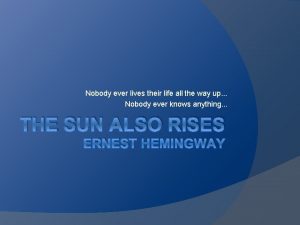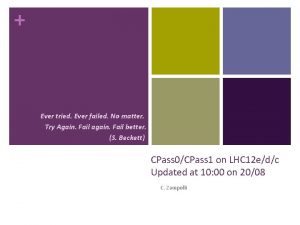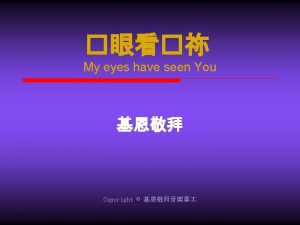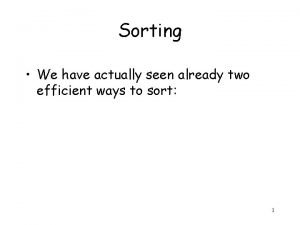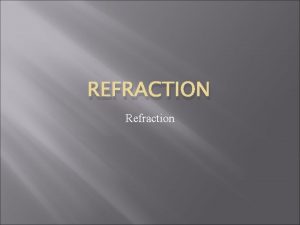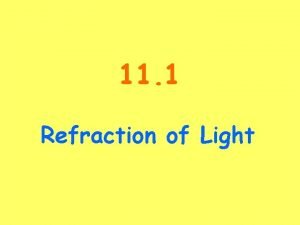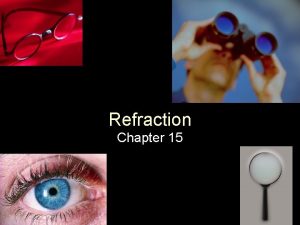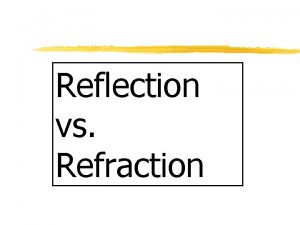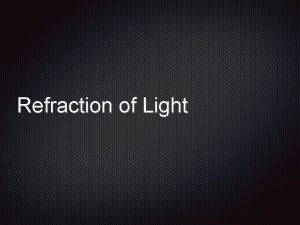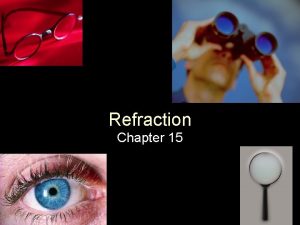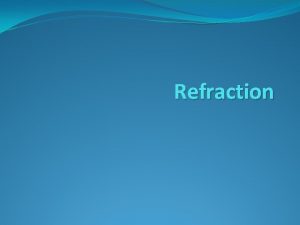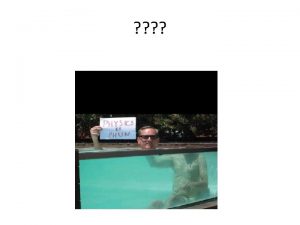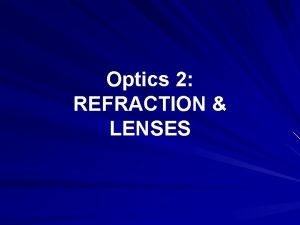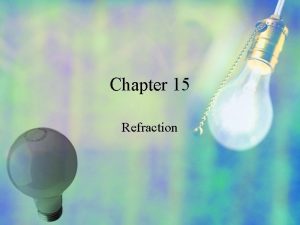Refraction Have you ever seen this Refraction of













- Slides: 13

Refraction

Have you ever seen this?

Refraction of Light n n When light travels through a surface between two different media, the light will be refracted if the angle of incidence is greater than zero. If light is passing into a more dense media, it will bend towards a normal with the boundary.

Sunset is an illusion

Light Passing Through Glass Reflected Ray Air Glass Refracted Ray θ 2 θ 4 θ 3 θ 1 Incident Ray Note: 1 = 4 2 = 3 The light exiting the glass is parallel to the light entering it.

Law of Refraction (Snell’s Law) n The ratio of the sine of the angle of incidence to the angle of refraction is a constant. n 1 sin 1 = n 2 sin 2 Where: n 1, n 2 = index of refraction 1 = Angle of incidence 2 = Angle of refraction www. sol. sci. uop. edu

Law of Refraction (Snell’s Law) n The ratio of the sine of the angle of incidence to the angle of refraction is a constant. n 1 sin 1 = n 2 sin 2 n Where: n 1, n 2 = index of refraction 1 = Angle of incidence 2 = Angle of refraction Note, the incident ray will always bend towards the normal when transitioning from a material with a lower index of refraction to one with a higher index of refraction. www. sol. sci. uop. edu

Continuous Waves – Lower Speed to Higher Speed Note the differences in wavelength and amplitude between of the wave in the two different mediums Incident + Reflected Wave Transmitted Wave v 2 -v 1 Displacement n Boundary Lower speed Higher speed Shorter wavelength Longer wavelength

Continuous Waves – Higher Speed to Lower Speed n Note the differences in wavelength and amplitude between of the wave in the two different mediums Transmitted Wave v 2 Displacement Incident + Reflected Wave -v 1 Boundary Higher speed Lower speed Longer wavelength Shorter wavelength Note: This phenomena is seen with light traveling from air to water.

Speed of Light and the Index of Refraction n n The index of refraction, by definition, is the ratio of the speed of light in a vacuum to the speed of light in a substance. The index of refraction is always greater than 1.


Total Internal Reflection n n When the angle of incidence is such that the angle of refraction is equal to 90 o, the critical angle ( c) has been attained. All rays will be reflected internally at all angles greater than this angle. c = sin-1 (n 2/n 1) n n n Note: Internal reflection can only occur if n 2 < n 1. Internal Reflection Application – fiber optic cable 2 1 1 2 www. micro. magnet. fsu. edu

Refraction of Light http: //www. teachersdomain. org/a sset/lsps 07_vid_lightrefract/ http: //www. teachersdomain. org/a sset/lsps 07_int_refractdemo/
 Have you ever been to britain
Have you ever been to britain Stanza in poem
Stanza in poem Have you ever seen a penguin come to tea
Have you ever seen a penguin come to tea Plural crocodile
Plural crocodile No one has ever seen her
No one has ever seen her Ever ancient ever new
Ever ancient ever new Clarified it
Clarified it Have you ever looked
Have you ever looked Ever tried ever failed no matter
Ever tried ever failed no matter Have you ever been to an amusement park
Have you ever been to an amusement park My eyes have seen you lyrics
My eyes have seen you lyrics Go tell john what you see
Go tell john what you see Transforming moments grade 12 short story summary
Transforming moments grade 12 short story summary The elements which you have actually seen
The elements which you have actually seen





